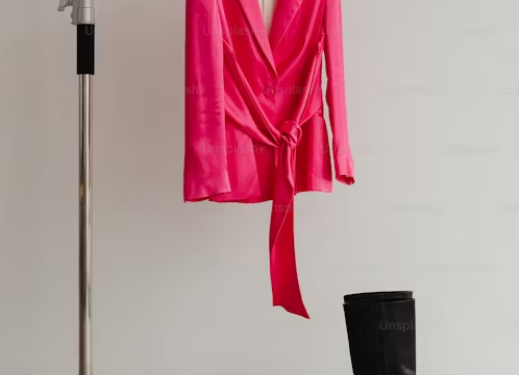In today’s fast-paced fashion industry, textile technology plays a crucial role in shaping the way we produce and consume clothing. As concerns about environmental sustainability continue to grow, there is a pressing need for innovative solutions that reduce the industry’s ecological footprint. In this article, we’ll explore the latest innovations in textile technology that are paving the way for sustainable fabrics and revolutionizing the fashion landscape.
Introduction to Textile Technology Innovations
Textile technology innovations encompass a wide range of advancements aimed at improving the efficiency, sustainability, and performance of textile production processes. From the development of new materials to the application of cutting-edge manufacturing techniques, these innovations are driving positive change in the fashion industry and beyond.
The Need for Sustainable Fabrics
The fashion industry is one of the largest contributors to environmental pollution, with traditional textile production methods often relying on harmful chemicals and excessive water consumption. As consumers become increasingly aware of the environmental impact of their clothing choices, there is a growing demand for sustainable alternatives that minimize harm to the planet.
Biodegradable Fabrics
One of the most promising developments in textile technology is the emergence of biodegradable fabrics. These innovative materials are designed to break down naturally at the end of their lifecycle, reducing the accumulation of waste in landfills and oceans. Examples of biodegradable fabrics include bamboo, hemp, and organic cotton, which offer comparable performance to traditional textiles without the environmental drawbacks.
Recycled Materials
Another key trend in sustainable textiles is the use of recycled materials. By repurposing waste materials such as plastic bottles, fishing nets, and old clothing, manufacturers can create new fabrics with significantly lower environmental impact. Recycled polyester, for example, has become increasingly popular in recent years due to its versatility, durability, and reduced carbon footprint.
Plant-Based Fibers
Plant-based fibers are gaining traction as a sustainable alternative to traditional textiles derived from fossil fuels. Materials such as lyocell, modal, and Tencel are made from renewable resources such as wood pulp, making them more environmentally friendly and biodegradable. These fibers offer similar properties to traditional fabrics but with the added benefit of being more sustainable and eco-friendly.
Smart Textiles
Smart textiles are revolutionizing the fashion industry by incorporating advanced technologies that enhance functionality and performance. From moisture-wicking fabrics to temperature-regulating materials, these innovative textiles offer increased comfort and durability while reducing the need for frequent washing and maintenance. Smart textiles also have the potential to improve sustainability by reducing energy consumption and extending the lifespan of clothing.
Nanotechnology in Textiles
Nanotechnology is being increasingly used in textile manufacturing to enhance the performance and sustainability of fabrics. By incorporating nanoparticles into textile fibers, manufacturers can create materials with unique properties such as water and stain resistance, UV protection, and antimicrobial properties. These advancements not only improve the durability and longevity of clothing but also contribute to a more sustainable fashion industry.
3D Printing in Fashion
3D printing technology is revolutionizing the way clothing is designed and manufactured, offering new possibilities for sustainability and customization. By layering materials to create intricate designs, designers can reduce waste and energy consumption compared to traditional manufacturing methods. 3D printing also allows for on-demand production, eliminating the need for large inventories and reducing the environmental impact of overproduction.
Collaborations and Research
Collaborations between fashion brands, textile manufacturers, and research institutions are driving innovation in textile technology. By pooling resources and expertise, these partnerships are accelerating the development of sustainable fabrics and manufacturing processes. From bioengineered materials to advanced recycling techniques, collaborative research efforts are shaping the future of sustainable fashion.
Challenges and Future Outlook
Despite the progress made in sustainable textile innovation, there are still significant challenges to overcome. Limited availability of sustainable materials, high production costs, and consumer resistance to change are just some of the obstacles facing the widespread adoption of sustainable fabrics. However, with continued investment in research and development, as well as increased consumer awareness and demand for eco-friendly products, the future of sustainable textiles looks promising.
Case Studies: Successful Implementations
Several leading fashion brands have already embraced sustainable textile innovations and integrated them into their collections. Companies such as Patagonia, Stella McCartney, and Adidas have made significant strides in incorporating recycled materials, plant-based fibers, and smart textiles into their designs, demonstrating that sustainability and style can go hand in hand.
Consumer Awareness and Education
Consumer awareness and education play a crucial role in driving demand for sustainable textiles. By educating consumers about the environmental impact of their clothing choices and the benefits of choosing sustainable fabrics, brands can empower individuals to make more informed purchasing decisions. Initiatives such as transparency in supply chains, eco-labeling, and sustainability certifications can also help consumers identify and support brands that prioritize sustainability.
Regulatory Environment
Regulatory frameworks and standards play an important role in promoting sustainability in the fashion industry. Governments and international organizations are increasingly implementing regulations and guidelines aimed at reducing the environmental impact of textile production and promoting sustainable practices. These regulations help create a level playing field for businesses and incentivize investment in sustainable technologies and processes.
Industry Impact
The impact of innovations in textile technology extends far beyond the fashion industry, with implications for sectors such as healthcare, sports, and transportation. Smart textiles, for example, have applications in medical devices, athletic wear, and automotive interiors, where their advanced properties can improve performance, comfort, and safety. By leveraging textile technology innovations, industries can enhance their products and services while reducing their environmental footprint.
Conclusion
In conclusion, innovations in textile technology are driving positive change in the fashion industry, paving the way for sustainable fabrics and manufacturing processes. From biodegradable materials to recycled fibers and smart textiles, these innovations offer promising solutions to the environmental challenges facing the industry. By embracing sustainable textiles, fashion brands can reduce their impact on the planet and contribute to a more sustainable and equitable future.

FAQs
- What are sustainable fabrics, and why are they important?
- Sustainable fabrics are materials that are produced using environmentally friendly and socially responsible methods. They are important because they help reduce the fashion industry’s environmental footprint and promote more ethical and sustainable practices.
- What are some examples of sustainable fabrics?
- Examples of sustainable fabrics include organic cotton, hemp, bamboo, recycled polyester, and plant-based fibers such as lyocell and modal. These materials are renewable, biodegradable, and have a lower environmental impact compared to traditional textiles.
- How can consumers support sustainability in the fashion industry?
- Consumers can support sustainability in the fashion industry by choosing clothing made from sustainable fabrics, supporting brands that prioritize environmental and social responsibility, and advocating for transparency and accountability in supply chains.
- What role does technology play in driving sustainability in fashion?
- Technology plays a crucial role in driving sustainability in fashion by enabling the development of innovative materials, manufacturing processes, and supply chain solutions. From biodegradable fabrics to 3D printing technology, advancements in technology are helping to reduce the industry’s environmental footprint and promote more sustainable practices.
- What are some challenges facing the adoption of sustainable textiles?
- Some challenges facing the adoption of sustainable textiles include limited availability of sustainable materials, high production costs, and consumer resistance to change. However, with increased awareness and demand for eco-friendly products, these challenges can be overcome, paving the way for a more sustainable fashion industry.






